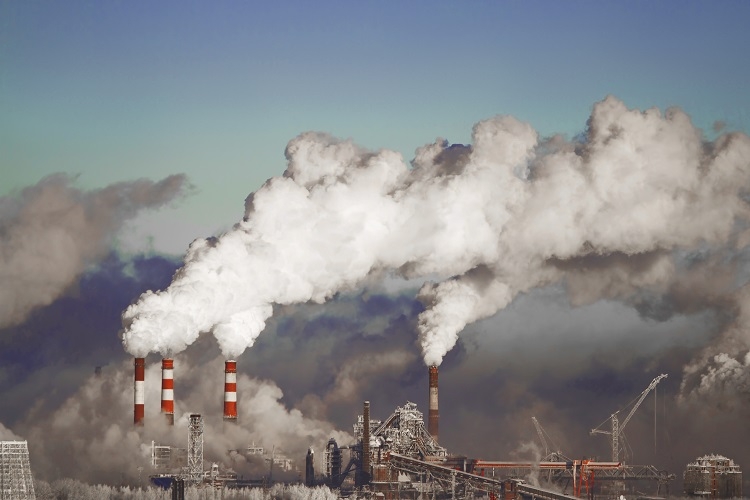Forests, soil may not keep pace with CO2 emissions, experts warn
 |
| Forests, soil may not keep pace with CO2 emissions, experts warn, illustration photo |
Climate projections mistakenly assume that land and what grows on it are able to absorb the CO2 humanity loads into the atmosphere, they reported in the journal Nature.
In reality, there's a trade off.
"Either soil or plants, but not both, will absorb more CO2 as carbon levels rise," lead author Cesar Terrer, a researcher at Lawrence Livermore National Laboratory in California, told AFP.
It is tempting, he said, to hang hopes on supercharged plant growth and massive tree-planting campaigns to reduce CO2 produced by burning fossil fuels, agriculture and destroying forests.
But researchers said that when elevated carbon dioxide levels boost forest and grassland growth, the accumulation of CO2 in soil slows down.
"Soils store more carbon worldwide than is contained in all plant biomass," said senior author Rob Jackson, a professor at Stanford's School of Earth, Energy and Environmental Sciences.
So far, Earth's terrestrial ecosystems have kept pace with rapidly increasing CO2 emissions, consistently absorbing some 30 percent even as those emissions have more than doubled over the last 50 years.
Oceans have also syphoned off a steady 20-odd percent of CO2 pollution during the same period.
Without these natural sponges, the amount of CO2 in the atmosphere today might be double preindustrial levels, enough to heat up the planet's surface by four to six degrees Celsius, according to a new generation of climate models.
With only 1.1C of warming so far, the planet has seen a crescendo of deadly heatwaves, flooding and other extreme weather.
The new study adds to growing evidence that the terrestrial carbon sink is weaker than once thought.
Terrer and colleagues analysed data from more than 100 published experiments on soil carbon levels, plant growth and CO2 concentrations, which have risen by half since pre-industrial times.
- Put the bar higher -
They were surprised by the results.
"It proved much harder than expected to increase both plant growth and carbon soil," said Jackson.
Researchers found that soils only accumulated more carbon in experiments where plant growth remained fairly steady, despite high levels of CO2 in the air.
The findings highlight a key difference between two types of ecosystem, and suggest that grasslands may turn out to be more important than long assumed when it comes to stocking away carbon.
"In forests, additional CO2 mainly increases above-ground carbon storage," Terrer explained.
"But the acquisition of additional nutrients needed to fuel plant growth increases soil carbon losses," cancelling out the benefit.
In grasslands, by contrast, elevated CO2 causes a relatively modest bump in biomass, while loss of carbon from the soil remains low.
"This new paper puts the bar higher for those models to capture the additional complexities of above-ground versus below-ground carbon storage," said Pep Canadell, executive director of the Global Carbon Project.
"Carbon stored in the soils is probably better long term protected than carbon in plants, which are susceptible to fire and other disturbances," he told AFP.
In 2019, the same researchers estimated that a doubling of CO2 compared to mid-19th century levels -- as expected by the end of this century -- will increase plant biomass by only 12 percent, far less than previously predicted.
Other research has warned that forests are losing their effectiveness in mopping up CO2.
In part, that's because a football pitch of old-growth, primary forest is destroyed every six seconds, releasing CO2 and reducing the areas left for absorbing it.
And beyond a certain temperature threshold the capacity of plants to absorb CO2 also declines, according to a study earlier this year.
What the stars mean:
★ Poor ★ ★ Promising ★★★ Good ★★★★ Very good ★★★★★ Exceptional
 Tag:
Tag:
Related Contents
Latest News
More News
- Main drivers for Vietnam’s digital economy future (December 03, 2025 | 11:35)
- Pivotal stage of growth paves way for rise in M&As (December 03, 2025 | 10:00)
- Positive projections for M&A interest from Thailand (December 03, 2025 | 09:40)
- Manifesting the first line of defence in cybersecurity (December 03, 2025 | 09:00)
- The transformational role AI can play in accounting arena (December 03, 2025 | 08:00)
- Unlocking 5G-AI potential in Singapore (December 03, 2025 | 08:00)
- Data-driven strategies vital for a fast-evolving nation (December 02, 2025 | 09:41)
- Policy to practice: how Vietnam can lead the region (November 26, 2025 | 16:03)
- Mobilising private capital at scale vital for climate battle (November 26, 2025 | 15:36)
- VILAF and Yoon & Yang launch Vietnam - Korea Practice Unit (November 26, 2025 | 15:16)























 Mobile Version
Mobile Version